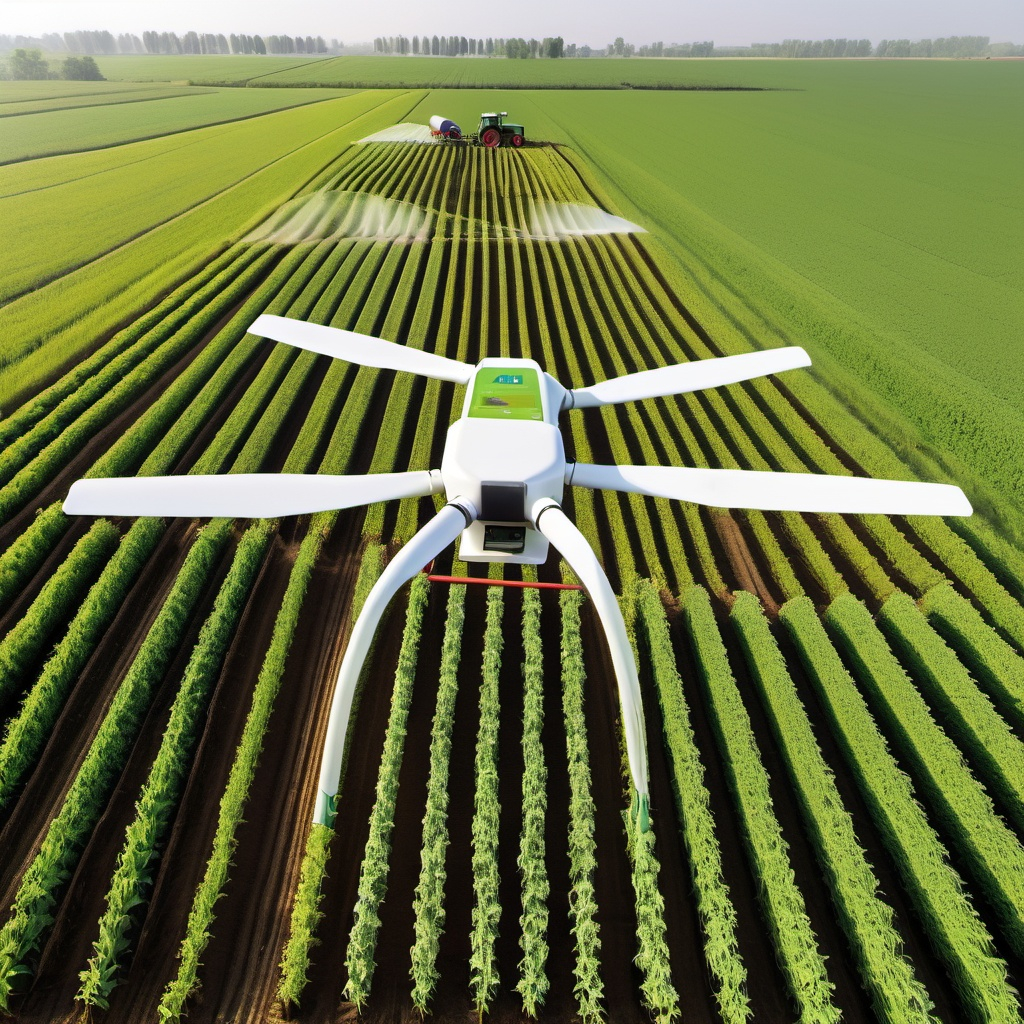
Agriculture Technology, commonly known as AgTech, represents the fusion of modern technology with traditional farming practices. It has revolutionized how food is produced, processed, and distributed, addressing challenges like population growth, climate change, and limited resources. By leveraging advanced technologies such as artificial intelligence (AI), drones, and data analytics, AgTech is transforming the agriculture sector into a more efficient and sustainable industry.
The Role of Artificial Intelligence in AgTech
Artificial Intelligence (AI) plays a crucial role in AgTech by providing farmers with predictive analytics and decision-making tools. AI-powered systems can analyze soil conditions, predict weather patterns, and even optimize planting schedules. This technology helps farmers reduce waste and maximize yield, ultimately improving the overall efficiency of agricultural practices. Machine learning models are also used to monitor crop health, detect diseases, and offer solutions that enhance productivity.
Drones and Precision Agriculture
Drones are becoming increasingly popular in precision agriculture, allowing farmers to monitor crops from the sky. These unmanned aerial vehicles (UAVs) capture high-resolution images, which can be analyzed to assess crop health, detect irrigation issues, and identify areas that need attention. Drones equipped with sensors can also collect data on soil moisture levels, temperature, and plant density. This real-time information allows farmers to make data-driven decisions that enhance crop yield while minimizing resource use.
IoT in Agriculture
The Internet of Things (IoT) is another key component of AgTech, enabling devices and sensors to communicate with each other in real time. Farmers can now use smart sensors to monitor environmental conditions like soil moisture, humidity, and temperature. These IoT-based systems provide insights that help optimize irrigation, fertilizer application, and pest control, reducing waste and improving crop productivity. IoT devices are also used in livestock farming to monitor animal health, track their movement, and ensure they are in optimal conditions.
Robotics in Farming
Robotic technology is finding its place in agriculture, particularly in tasks that require precision and consistency. Autonomous tractors and harvesters, for instance, can operate around the clock, reducing the need for manual labor. Robots are also used in planting, weeding, and harvesting crops. Their ability to work with high precision and efficiency makes them ideal for large-scale farms where manual labor can be time-consuming and costly. Moreover, robotics helps in reducing the physical strain on farmers, making farming more accessible.
Data Analytics and Farm Management Software
Data analytics is essential in modern farming. Farm management software platforms use data to help farmers track every aspect of their operations, from planting and irrigation to harvesting and logistics. These platforms aggregate data from various sources, such as weather forecasts, satellite imagery, and sensor data, to provide actionable insights. With data-driven decision-making, farmers can increase crop yields, reduce operational costs, and improve sustainability.
Vertical Farming and Controlled Environment Agriculture
Vertical farming is a groundbreaking innovation that involves growing crops in vertically stacked layers, often in controlled indoor environments. This method allows for year-round production, using less land and water than traditional farming. Controlled Environment Agriculture (CEA) further enhances vertical farming by regulating temperature, humidity, and light to create optimal growing conditions. These technologies are particularly useful in urban areas where space is limited, offering a sustainable solution to food production in densely populated regions.
Blockchain in Agriculture
Blockchain technology is gaining traction in the agricultural sector, providing transparency and traceability across the supply chain. By using blockchain, farmers and consumers can track the journey of food from farm to table, ensuring that products are authentic, sustainably sourced, and free from tampering. Blockchain also facilitates secure and efficient transactions between producers, suppliers, and retailers, reducing the risk of fraud and improving trust in the agricultural supply chain.
Genetic Engineering and CRISPR
Advances in genetic engineering, particularly CRISPR (Clustered Regularly Interspaced Short Palindromic Repeats) technology, have opened new possibilities in crop improvement. CRISPR allows scientists to modify the genetic makeup of plants to enhance their resistance to diseases, pests, and environmental stressors. This technology enables the development of crops with improved nutritional content, longer shelf life, and better adaptability to changing climates. Genetic engineering in AgTech holds the potential to address food security challenges while reducing the need for chemical inputs.
Sustainable Agriculture Practices
Sustainability is at the core of modern AgTech innovations. Technologies that reduce water usage, minimize chemical inputs, and promote soil health are vital to achieving long-term sustainability in agriculture. Practices such as precision irrigation, organic farming, and crop rotation, combined with AgTech innovations, contribute to more sustainable food production systems. These methods help mitigate the environmental impact of agriculture while ensuring that future generations can continue to rely on productive and healthy farmland.